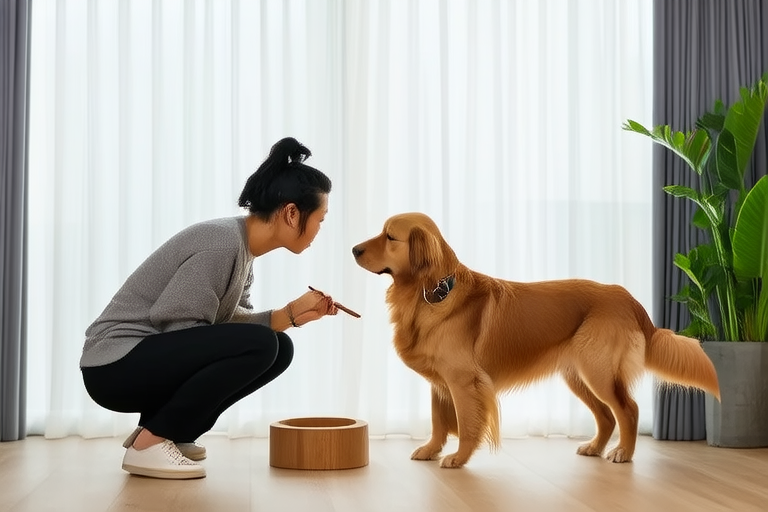The Unique Norwegian Approach to Training Your Pets
When it comes to pet training, different cultures have developed unique approaches that reflect their values and environment. Norway, known for its stunning landscapes and strong connection to nature, offers a distinct method of pet training that emphasizes positive reinforcement, natural environments, and community involvement. This article explores the Norwegian approach to pet training, highlighting traditional techniques, modern adaptations, and success stories.
The Cultural Significance of Pet Training in Norway
In Norway, pets are often seen as family members rather than just animals. This deep bond fosters a nurturing environment where pets are trained not only for obedience but also for companionship and emotional support. The Norwegian approach to pet training is deeply rooted in the country’s cultural heritage, with practices that have been passed down through generations.
Historically, Norwegian farmers have used gentle yet effective methods to train their farm animals, ensuring they could work alongside humans without fear or aggression. These methods were later adapted for household pets, creating a foundation for what is now recognized as the Norwegian approach to pet training.
Key Principles of Norwegian Pet Training
The Norwegian approach to pet training is built on several key principles:
- Positive Reinforcement: Emphasizing rewards over punishment, trainers encourage desired behaviors by offering treats, praise, and affection. This method not only strengthens the bond between pet and owner but also promotes a positive learning experience for the animal.
- Natural Environments: Training sessions are often held outdoors, taking advantage of Norway’s abundant natural spaces. This allows pets to learn in a familiar and stimulating environment, which can enhance their cognitive and physical development.
- Community Involvement: Pet owners are encouraged to participate in local training groups and events, fostering a sense of community and shared responsibility for the well-being of pets.
Traditional Techniques and Modern Adaptations
Traditional Norwegian pet training techniques include:
- Clicker Training: Originating from marine mammal training, clicker training has been adapted for dogs and cats in Norway. A small device emits a clicking sound to mark the exact moment a desired behavior occurs, followed by a reward. This precise timing helps pets understand what behavior is being rewarded, leading to faster and more accurate learning.
- Forest Walks: Taking pets for walks in forests or other natural areas provides them with mental stimulation and physical exercise. This practice not only improves their fitness but also teaches them to navigate various terrains and socialize with other animals and people.
- Group Training Sessions: Organized group training sessions allow pets to interact with others of the same species, promoting socialization and reducing aggressive tendencies. These sessions are often led by experienced trainers who provide guidance and support to pet owners.
Modern adaptations of these techniques include:
- Technology Integration: Some Norwegian pet trainers have begun using apps and wearable technology to track pets’ progress and provide personalized training plans. For instance, devices that monitor a pet’s activity levels can help trainers adjust exercise routines accordingly.
- Virtual Reality Training: Virtual reality is being explored as a tool for simulating challenging environments, allowing pets to practice skills in a controlled setting before applying them in real-world situations.
Benefits of the Norwegian Approach
The Norwegian approach to pet training offers numerous benefits for both pets and their owners:
- Improved Behavior: By focusing on positive reinforcement and natural environments, pets become more obedient and better behaved. They learn to respond to commands and cues effectively, making them easier to manage in various settings.
- Better Health: Regular outdoor activities and mental stimulation contribute to improved physical health and longevity for pets. Additionally, socialization through group training sessions can reduce stress and anxiety.
- Stronger Bonds: The emphasis on positive reinforcement and community involvement strengthens the bond between pets and their owners. This leads to increased trust and loyalty, enhancing the overall quality of life for both parties.
Success Stories
Many pet owners in Norway have reported remarkable success stories using this approach. One such story involves a dog named Luna, who was initially aggressive towards strangers and other dogs. Her owner, Anne, enrolled her in a local training group that employed positive reinforcement techniques. Over time, Luna became more confident and friendly, eventually participating in group training sessions and enjoying forest walks with her owner.
Another example is a cat named Oliver, who had difficulty using his litter box consistently. His owner, Lars, implemented a clicker training program at home, rewarding Oliver each time he used the litter box correctly. Within weeks, Oliver’s litter box habits improved significantly, much to the relief of his owner.
Expert Insights
To further validate the effectiveness of the Norwegian approach, we spoke with Dr. Hanne Sunde, a veterinarian and pet behavior specialist based in Oslo. She emphasized the importance of positive reinforcement in pet training, stating, “By rewarding good behavior, we encourage pets to repeat those actions. This creates a cycle of positive reinforcement that strengthens the bond between pet and owner.”
Dr. Sunde also highlighted the role of natural environments in pet training. “Outdoor training sessions provide pets with mental and physical stimulation, which is crucial for their overall well-being. Moreover, interacting with other animals and people in a natural setting can greatly improve socialization skills.”
Conclusion
The Norwegian approach to pet training offers a unique blend of tradition and innovation, providing pet owners with effective tools to train their animals. By focusing on positive reinforcement, natural environments, and community involvement, this approach promotes healthier, happier pets and stronger bonds between pets and their owners. As more pet owners around the world embrace these techniques, we can look forward to seeing even greater success stories and continued improvements in pet welfare.
